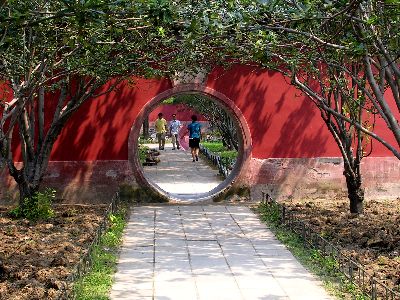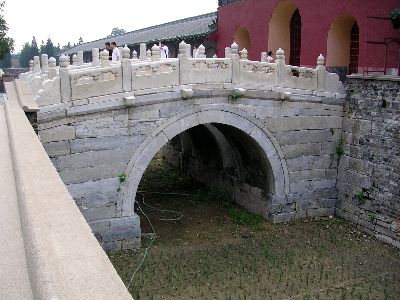Postcards from Beijing
(Part One)
First Impressions
It's always a bit difficult to judge a city during the ride from the airport to the hotel, but here goes. My first impression of Beijing was that it is very grey. This is partly due to the weather when I arrived, a heavy mist obscuring the sun and limiting visibility. Also, everything in the street is coated with a sandy dust, presumably left by the dust storms that they have in the spring. This lends things a grubby appearance. Here's a grey view from my window.
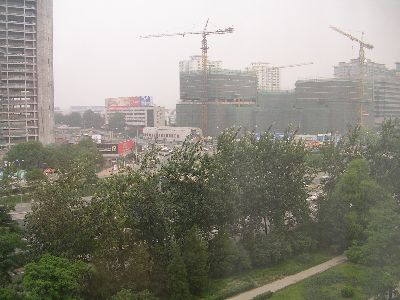
However, this is also a very green city in places. You can see the trees in the picture above, and there are small parks scattered all over the place. I found this one on a side street near a railway line.
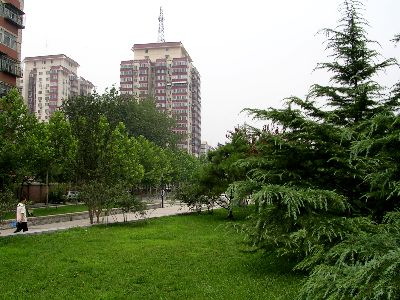
Oh, and the traffic is crazier than in Dubai, and the weather's much too hot!
Tian'anmen Square
A sunny summer Sunday is not the best time to visit the most famous tourist attraction in Beijing, as the whole enormous sqaure is packed with tourists. Nonetheless, it's the place one has to do first, so I did. At the north end of the square, the Chinese visitors take turns to be photographed in front of Tain'anmen, the gate marking the entrance to the Forbidden City.
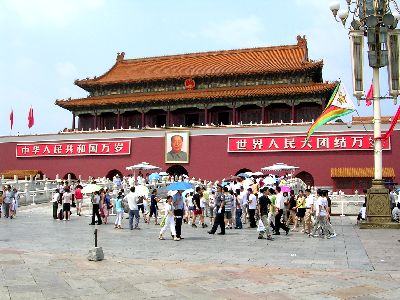
It is hard to describe the size of the square. Built to be the symbolic heart of the People's Republic, its 400,000 square meters make it the largest public square in the world, according to my guide book.
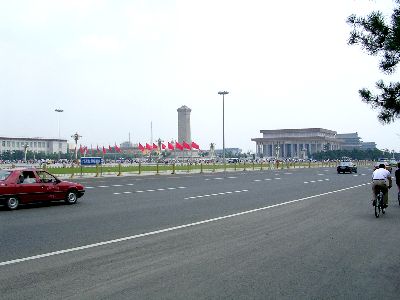
In the middle of the square are the Monument to the People's Heros and the Chairman Mao Memorial Hall.
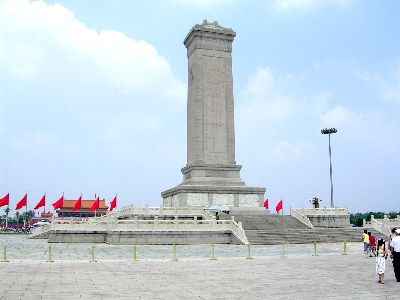
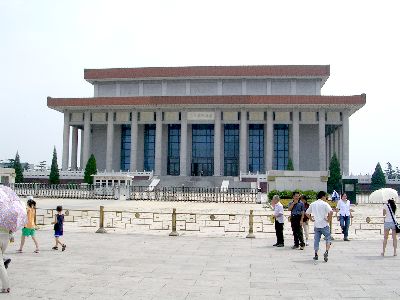
The gate at the southern end is called Zengyangmen.
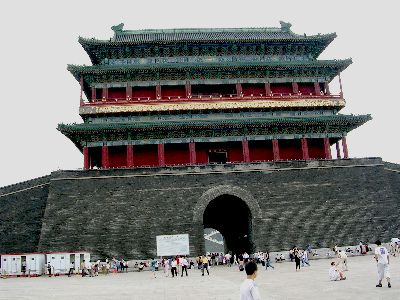
Jingshan Park
Just north of the Forbidden City is this park which features a hill constructed from the spoil from the Forbidden City's moat.
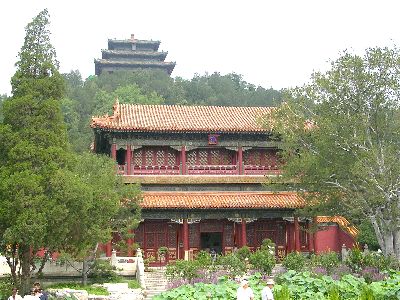
The hill has five pavilions on it and you can get good views of the Forbidden City, Beihai Lake and to the north, despite the usual hazy conditions. In this heat the hill could use a funicular or a lift or something!
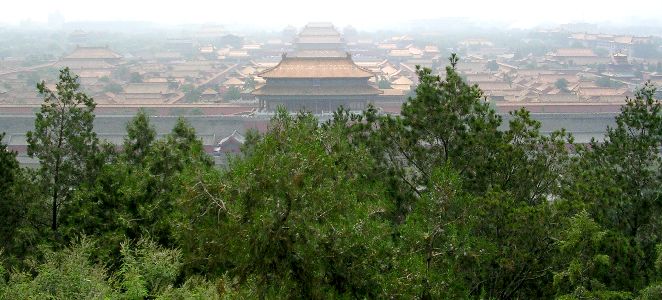
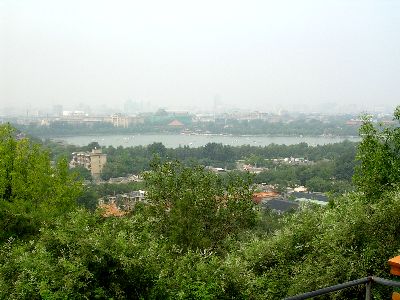
In the park an important attraction for the Chinese tourists is the tree from which the last Ming emperor, Chong Zhen, hung himself in 1644. (Actually, the tree now growing here is not the original.)
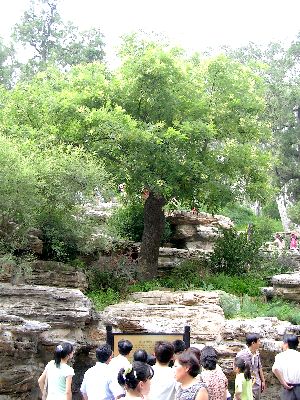
Trolleybuses
Beijing has an enormous fleet of trolleybuses, old and new.
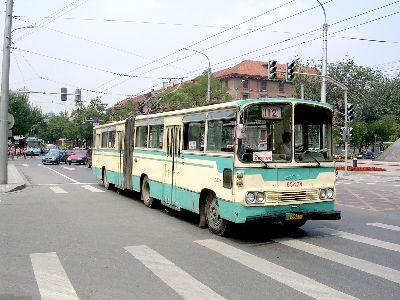
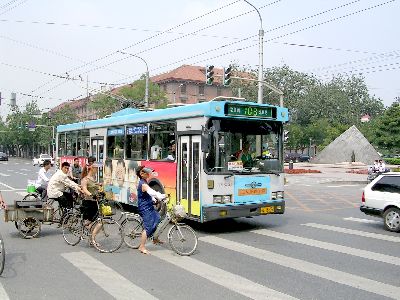
These trolleybuses have a clever trick up their sleeves: Batteries. They use this on routes along streets where there are no wires, and also to recover from problems such as the de-wirement in the right hand picture below, where the trolley head has snapped off.
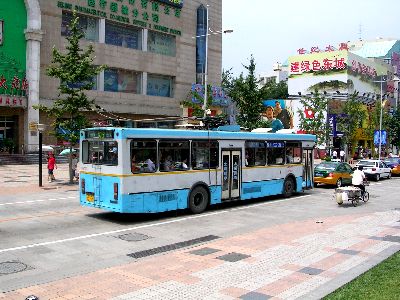
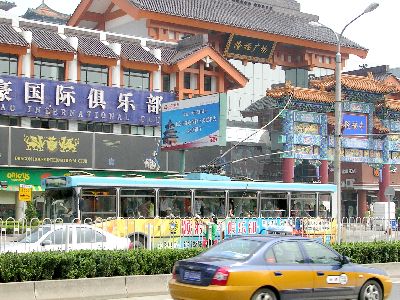
But not so clever after all. Routes using battery power certainly avoid the clutter of overhead wiring and allow flexible re-routing, but the changeover back to wires is difficult and only works if the trolleybus stops in exactly the right place. The driver then flicks the switch to release the trolley arms which should rise gracefully onto the wires.
I observed this process for a while and nearly half the attempts were unsuccessful and required the driver to jump out and use the more traditional ropes to achieve contact. In the right hand picture below you can see the plates which should guide the trolleys onto the wire.
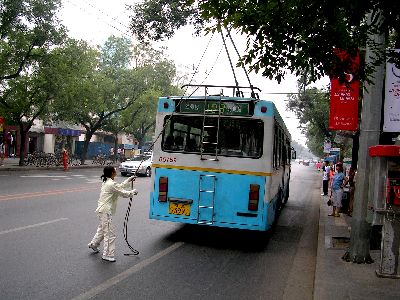
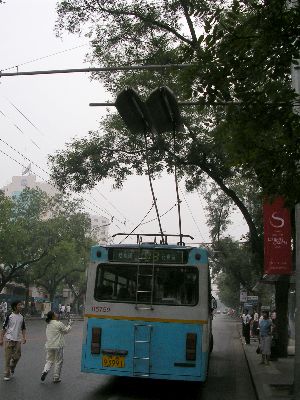
Money
The local currency is the yuan, or RMB (Renminbi - it means people's money) or kuai. Here's a selection of notes. The brown one RMB is an older note, now being replaced by the green version. The rather tatty two RMB note is the only example I've seen.
The smaller five, two and one on the bottom row are jiao, which are tenths of an RMB.
There are also coins for one RMB, jiao, and another unit called a fen which is one tenth of a jiao, but with a whole RMB being worth about seven pence these smaller units are not much use, and the fen is usually ignored in normal transactions - I haven't seen one yet.
(I noticed the other day that a can of Coke in the shop at work comes up on the till as 1.75, but they seem to charge you 1.80.)
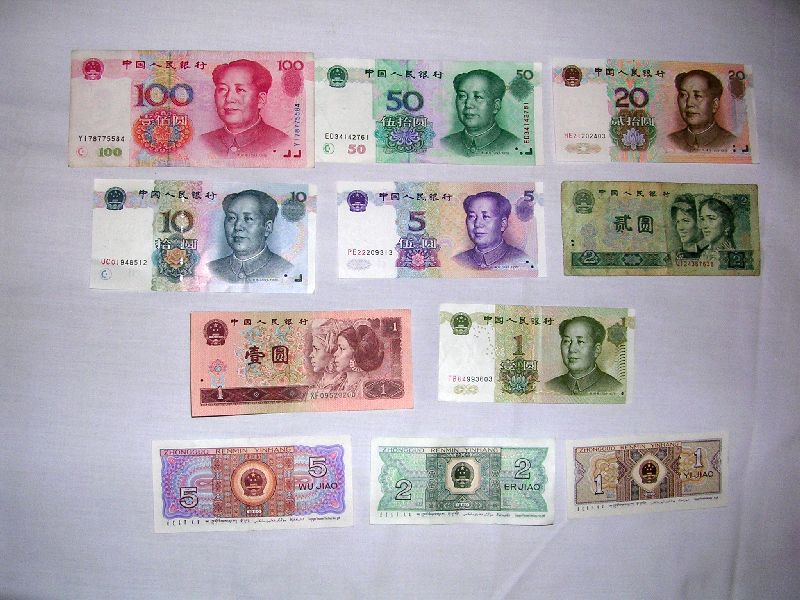
Beijing Home
My apartment is in this rather ugly block, one of the Landmark Towers. I am round the back, with a view of a sub-station, a bit of the river, the flower market, and (most importantly) Durty Nellies Irish Pub.
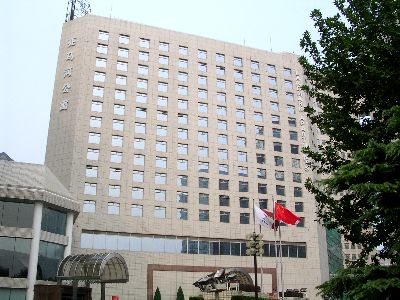
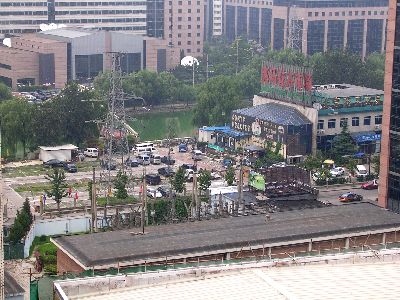
The Liangma River provides a green space amongst the busy roads of the area, and as well as strolling along the banks the locals fish and even swim.

China Railway Museum
The China Railway Museum, in the outskirts of Beijing outside the fifth ring road, is one of those museums in the middle of nowhere that no-one as heard of, so getting there was an adventure in itself; the taxi driver had to stop and ask directions three times.
He certainly earned his tip!
Once there I found a giant hanger that any airport would be proud of, containing a large collection of locomotives and about half a dozen visitors.
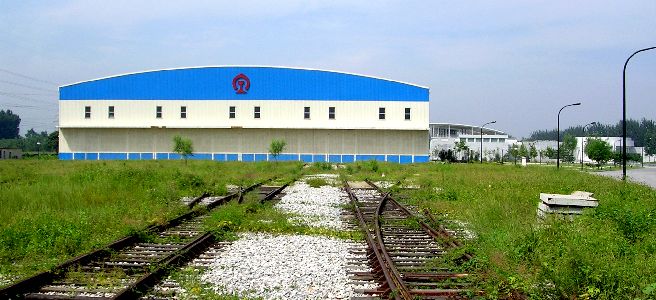
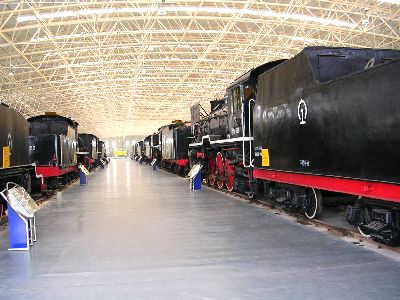
The extensive steam collection includes locos built all over the world, as well as in China (Where they only stopped manufacturing main line steam locos in 1988).
(Below, left) Celebrity JF1 304, named Mao Zedong, was built in Japan in 1941, while KF1 006 (Below, right) was built at Vulcan Foundry, Newton-le-Willows, just ten miles from my home.
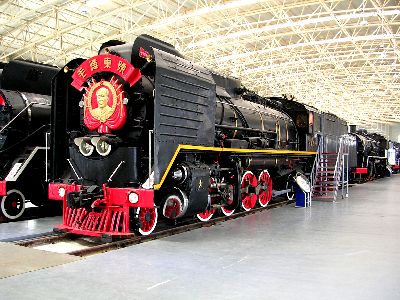
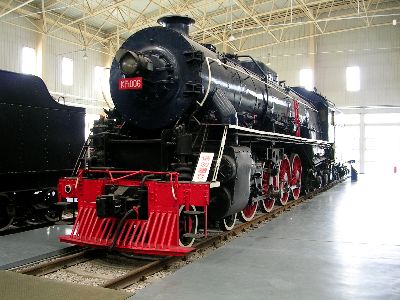
Here's a Belgian-built loco dating from 1922 and an American one from 1947.
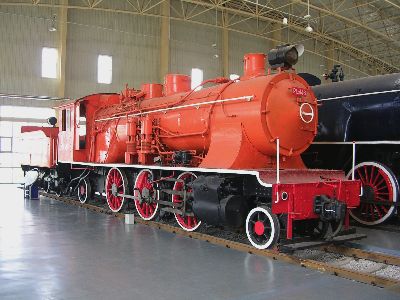
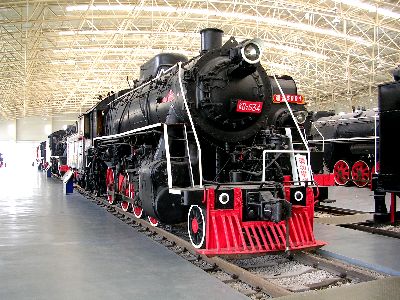
This French metre gauge loco was built in 1926, and this 600mm gauge American loco from 1921 worked on the Jijie - Gejiu and the Gejiu - Bisezai - Shiping lines.
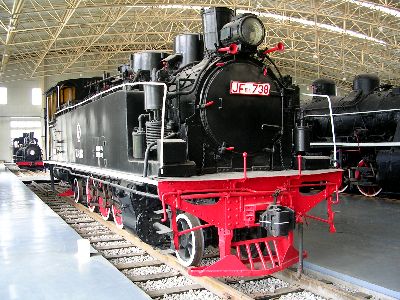
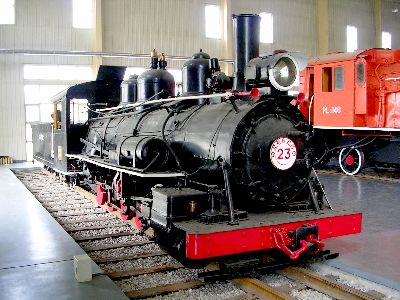
Moving on to diesel traction, we see three locos built in China.
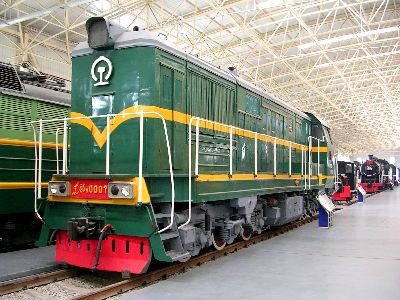
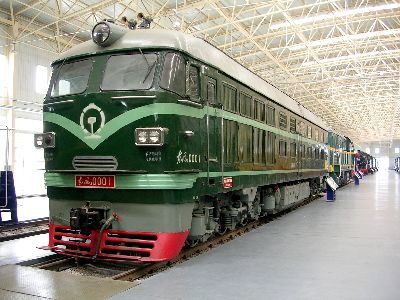
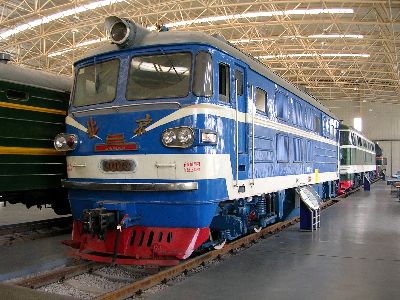
Imports wern't forgotten in the diesel era, these two examples are from Romania and Germany.
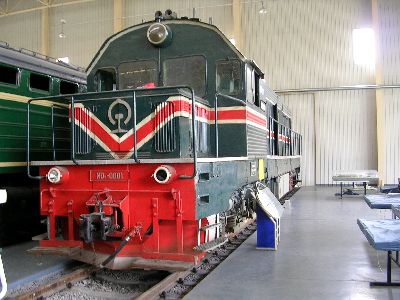
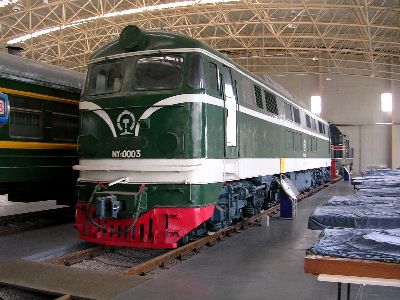
Finally, the museum's collection of coaching stock includes one which served as the official coach of Comrade Zhou Enlai, Premier of the State Council, in the 1950s and 60s.
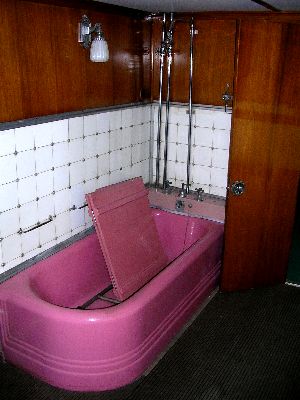
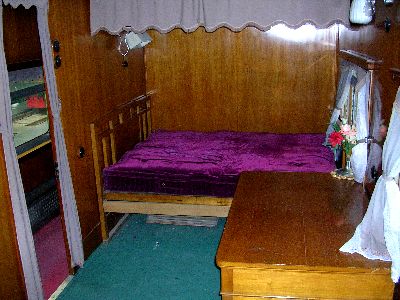
So, a railway museum with an excellent collection of rolling stock, but absolutely nothing else - No exhibits explaining the history of Chinese railways, no restaurant, no gift shop to speak of. (Just a few postcards and some nice model trains on sale.).
Of course, all these things can be added later, but once a steam loco has rusted away it is gone for ever, so at least they've got their priorities right. Most of the steam locos seem to have rods missing, I'm not sure about the state of other components.
Oh, and few more signposts on the way there wouldn't go amiss!
August 2005.
Tiantan
Located in southern Beijing, Tiantan (The Temple Of Heaven) is a large park containing a number of temples and other buildings. Historically, this was where the emperor prayed for the year's harvests at the winter solstice.
The Imperial Vault of Heaven is surrounded by a circular echo wall which is supposed to be a perfect whispering gallery although it was impossible for me to test this with hundreds of noisy tourists all trying at the same time.
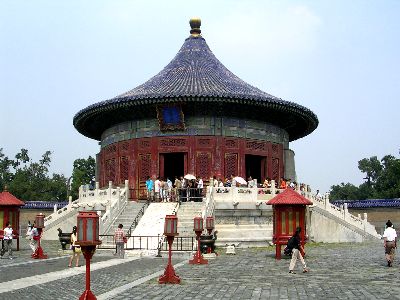
Access to the Hall Of Prayer for Good Harvests is via a long gallery with intricate decorations. Sadly, the Hall itself is closed for refurbishment so this is the closest I could get to it.
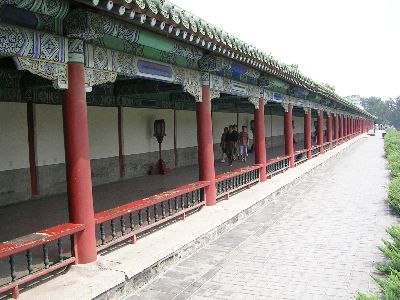
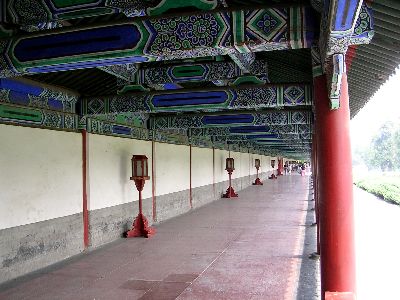
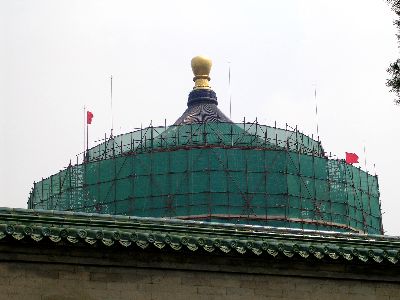
Aside from the beautiful buildings, the park itself is very pleasant and peaceful once you get away from the tourists.
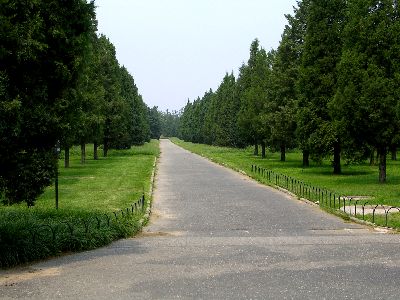
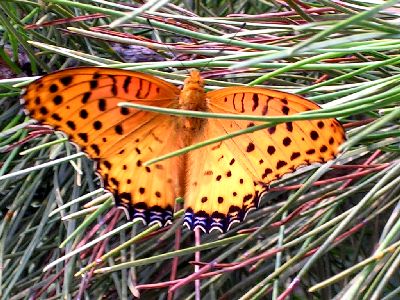
There are many nicely decorated pavilions in the park. This "double" one is apparently an unusual design.
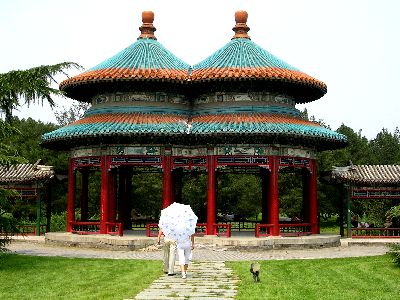
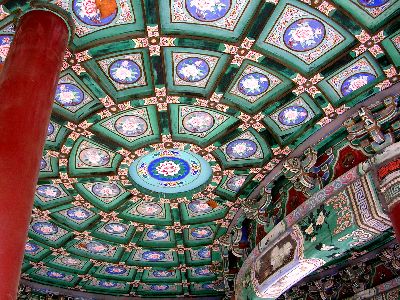
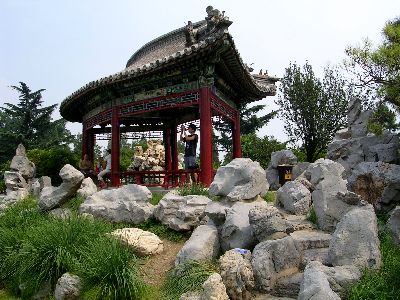
Also in the park is the large Palace of Abstinence where the Emperor fasted for three days before the Solstice ceremonies - surrounded with a number of walls and two moats. You need an aerial shot to really appreciate this place, as from ground level all you can see is the next wall.
